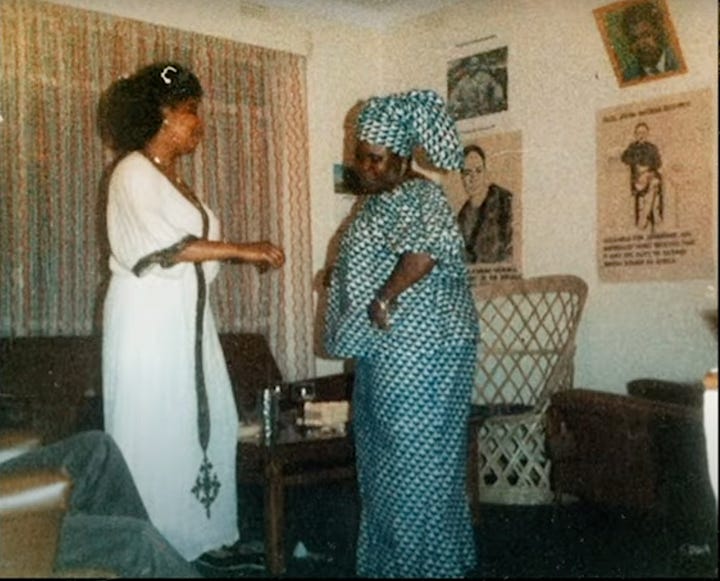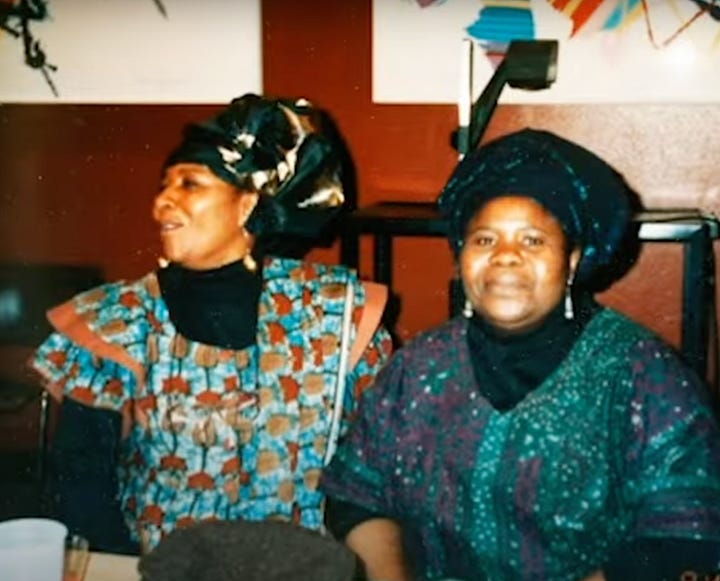“Where are those songs my mother and yours always sang fitting rhythms to the vast span of life?”
I came into these words by Micere Mugo while seated in an African love poetry class in the first semester of my third year in university. A clarion call, insistent in drawing out a response, her poems or love letters have lingered and will always linger. Micere’s call birthed my response in the form of Wer Jokenya (an online archival platform celebrating Kenyan music histories through the visual), birthed the existence of this space and I believe will continue to go before and surround both you and me in life-giving ways that are the experience with all that come into her words. Her grounding and development of African orature – inseparable from the sonic – playfully and seriously demands one to embrace “the historical stock-taking” of our lives.
In the poem, whose words give name to this space, and lead this work, Micere firmly places song as the very foundation of our beings, reminding us that it is in the sonic where our loves, our pains, our ordinary moments, and the ceremonies that mark the passages of life – temporal, cyclical – are found. Micere words beckon, glisten, and remind us that our songs are sweeter, more soulful, and more whole when heard and learned and sung in community, that indeed, melody and rhythm are inseparable from community.
And so here is, “where are those songs,” a space to celebrate the lives of African women and the expression of their lives within the sonic. Here is to learning about their joys (how did they like their tea, what was and is their favorite color), and pains, their dreams. Here is to sitting with the musical archives they have entrusted us with, listening closely, with reverence, and with introspective honesty, attending to what they are telling us about themselves and the world through their sounds. Here is to the liner notes, these love letters that expand our thinking, a style of referencing and contextualizing, a method of tracing lineage, a way of theorizing. Here is to moving with the “recognition of the difficulty of narrating a life,” of figuring out together what it means to make space for these women to speak to us in their intonation. Here is to inviting song to be our closest co-conspirator, always allowing it to teach us about itself, ourselves, and the spheres we occupy. Here is to holding the visual and the sonic hand in hand, considering their inseparability and how each forms and informs the other.
My deepest desire is that this space, “where are those songs,” would dance in the truth of the poem that formed it, that it would make space for playful, serious, beautiful, nuanced, and different and alternative ways of talking [singing], thinking [composing], and theorizing about African women's sonic histories and archives.
The first sonic balm and love offering is this mixtape, containing the full narration of the poem “Where are those Songs?” in honor of Micere Mugo, holding space for her and Ama Ata Aidoo – a soul sister of her’s – and for Emahoy and Stella celebrating the beacons who passed on from this life into the next.


Liner Notes:
[as method of referencing]
Tracklist 🎙
Healer - Sampa the Great
Healing - Sampa the Great
A Time for Healing - Kahil El'Zabar Quartet
Kibuthi - Kangema Urban Group
Mother's Love - Emahoy Tsege Mariam Gebru
Thandewye - Nina Simone
Tembisa (The People) - Andile Yenana
AYIDA - Luidji
Ndangariro - Stella Chiweshe
Photographic sources and articles 📸
Micere Mugo legacy in creative thinking and freedom of mind - The Standard
Renowned author Micere Mugo dies at age 80
We Are Because She Is: Celebrating Micere Githae Mugo - The Elephant
Love notes to Micere 💌
LAURA EKUMBO - Brazen, A Year Later: A Freedom Fighter and the Aftermath of Dreaming
MSHAÏ MWANGOLA - Micere Githae Mugo: Creating Liberated Zones





